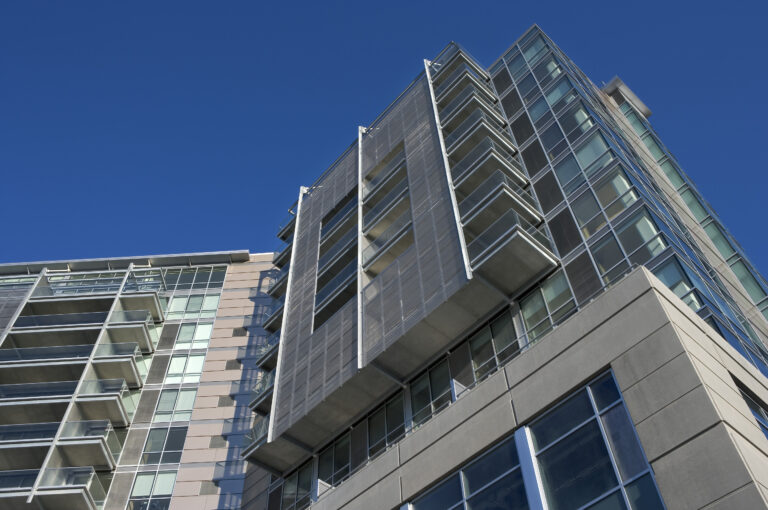Let’s face it: construction projects are expensive. Additional funding through grants or tax credits can go a long way in helping you complete your project and achieve the quality you desire.
One popular funding method for private developers is Tax Increment Financing (TIF). The funding method encourages development in economically vulnerable areas and helps developers fund projects that might not otherwise see completion.
We have worked with numerous building owners who have utilized TIF. In this article, you will learn about the benefits of TIF and its requirements, helping you determine if it fits your project and goals.
What is Tax Increment Financing (TIF)?
Tax Increment Financing (TIF) is a public funding method that subsidizes redevelopment, infrastructure, or other community improvement projects. The goal is to stimulate development in economically vulnerable areas and increase a city’s tax base.
Government bodies may allocate TIF in one of two ways. First, they may offer up-front cash to fill a funding gap. Once construction is complete, the developer pays back the investment through the increased property taxes generated by the new development.
This method helped fund Plaza Towers in Iowa City. Before development, the Plaza Towers site was a parking lot that generated no tax revenue. The city provided $5M in funding and earned back their investment through property taxes.
Tax rebates are the second funding option. In these situations, a municipality pledges the difference between the pre-development taxes and the taxes it expects to receive after the project’s completion.
The property tax revenue is “frozen” for a specified period (usually 15-20 years), and the municipality rebates the difference between the previous and current tax rates. In short, the municipality forgoes some tax revenue to secure a project that will generate more revenue in the future.
How to Secure TIF
TIF plans vary based on the municipality and project. Generally, local governments only offer funding in economically vulnerable areas called “TIF districts.”
Even within these districts, municipalities may only fund projects that align with public policy goals. They may stipulate requirements for sustainability, historic preservation, or cultural opportunities to ensure the project has the desired impact.
To secure funding, you may need to adjust your plans and find ways to align your project with public policy goals.
East College Street Case Study
TIF requirements differ from city to city and project to project, making it difficult to provide a step-by-step guide to securing funding. Instead of a generalized guide, we’ll explain how the process works through a real-world example.
The East College Street Development in Iowa City is a recent project to secure TIF. The project began in 2017 when the Tailwind Group, a developer from Mankato, Minnesota, acquired the Crescent Building on Iowa City’s Ped Mall. Later, they decided to rehabilitate the four surrounding buildings and add a 102-unit student houses complex on the alley side of the site.
After securing all other means of financing, Tailwind applied for TIF to fill a $12M financing gap.
Working with the city, Tailwind aligned the project with public policy goals. The five original buildings on the Ped Mall were granted Local Historic Landmark status, saving them from future demolition. Additionally, a portion of the Crescent Building was set aside for the Riverside Theatre, a non-profit professional theatre company, to bolster the downtown art scene.
The city also stipulated that the developers align the project with the city’s sustainability goals. Through solar arrays and energy-efficient features, the new student housing complex (the Nest) will seek a Leadership in Energy and Environmental Design (LEED) Gold Certification.
By touching on several policy priorities—including historic preservation, arts and culture, and sustainability—the project is an ideal candidate for TIF. In an interview with the Iowa City Press-Citizen, Wendy Ford, the City’s Economic Development Coordinator, stated, “TIF policies lay out minimums for developers to achieve; [Tailwind Group] hits all of them—and exceeds on several of them, as well.”
The city will fill the $12M financing gap through a 15-year tax rebate. For the first eight years, Tailwind will receive a 100% rebate, and for the final seven years, the rebate will drop to 75%. By staggering the rebate, the city can receive the property’s tax revenue sooner than later.

The East College Street development in Iowa City.
Learn More About Funding a Construction Project
TIF is an effective funding method for private developers. It represents a partnership between local governments and the private sector. By providing funding, a municipality can encourage projects that align with their goals and enhance the public realm.
Funding stipulations differ across states and municipalities and are usually decided on a project-by-project basis. If you are considering TIF, talk to your architect to determine how you can best align your project policy goals and receive funding.
TIF does not fit every project, but there are other funding options available, including economic development grants and federal historic tax credits. Learn more by reading our overview of historic tax credits.
